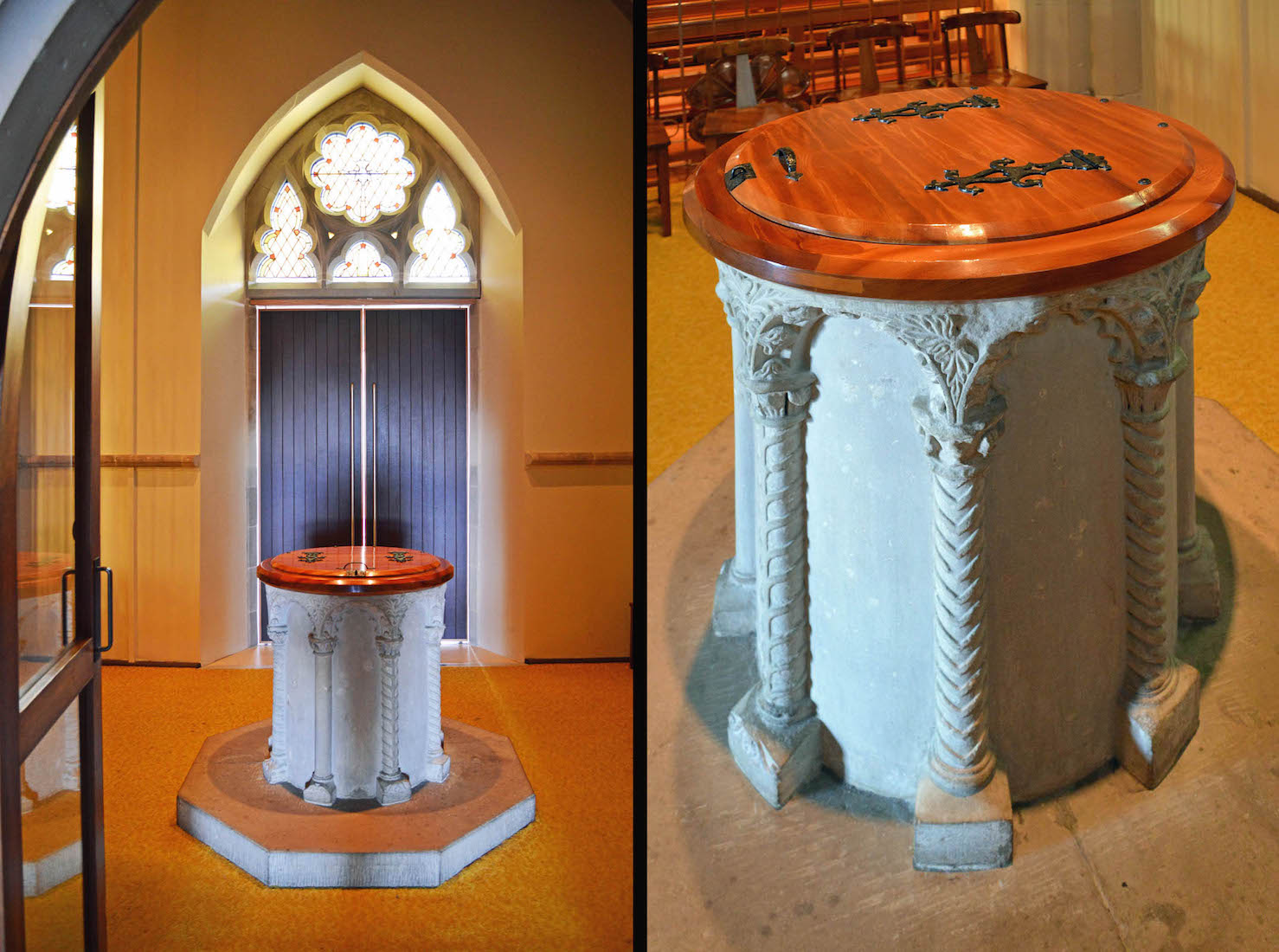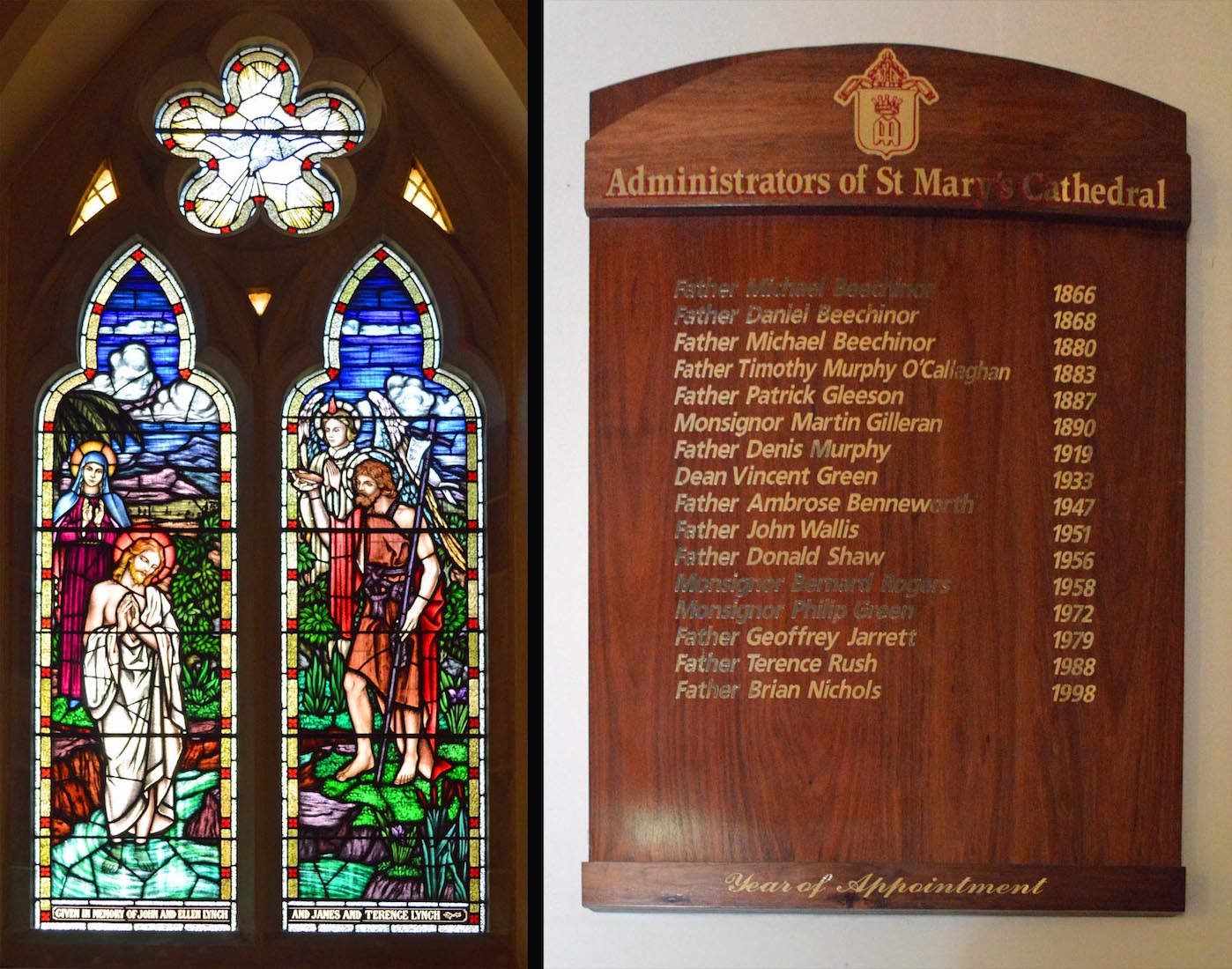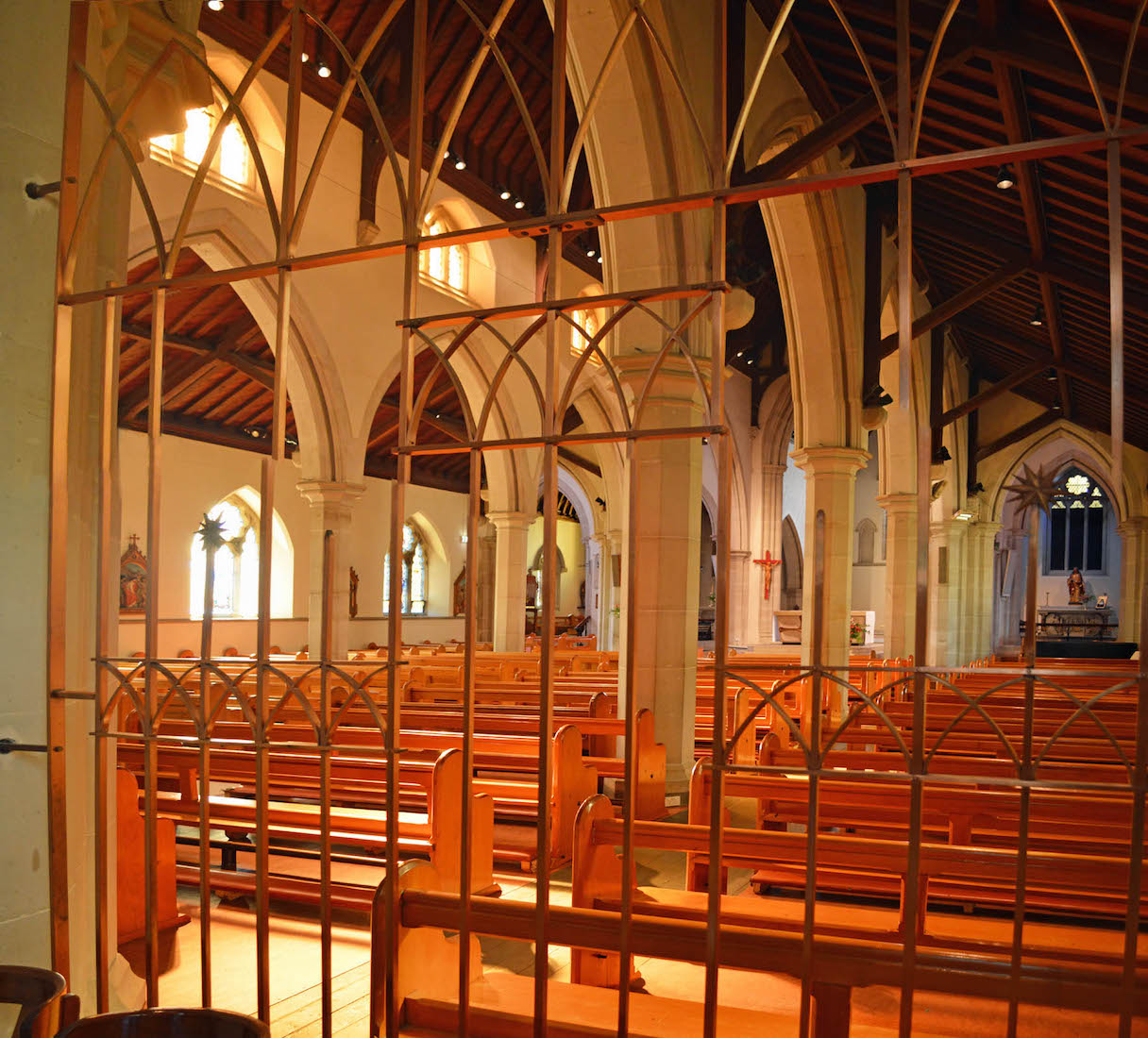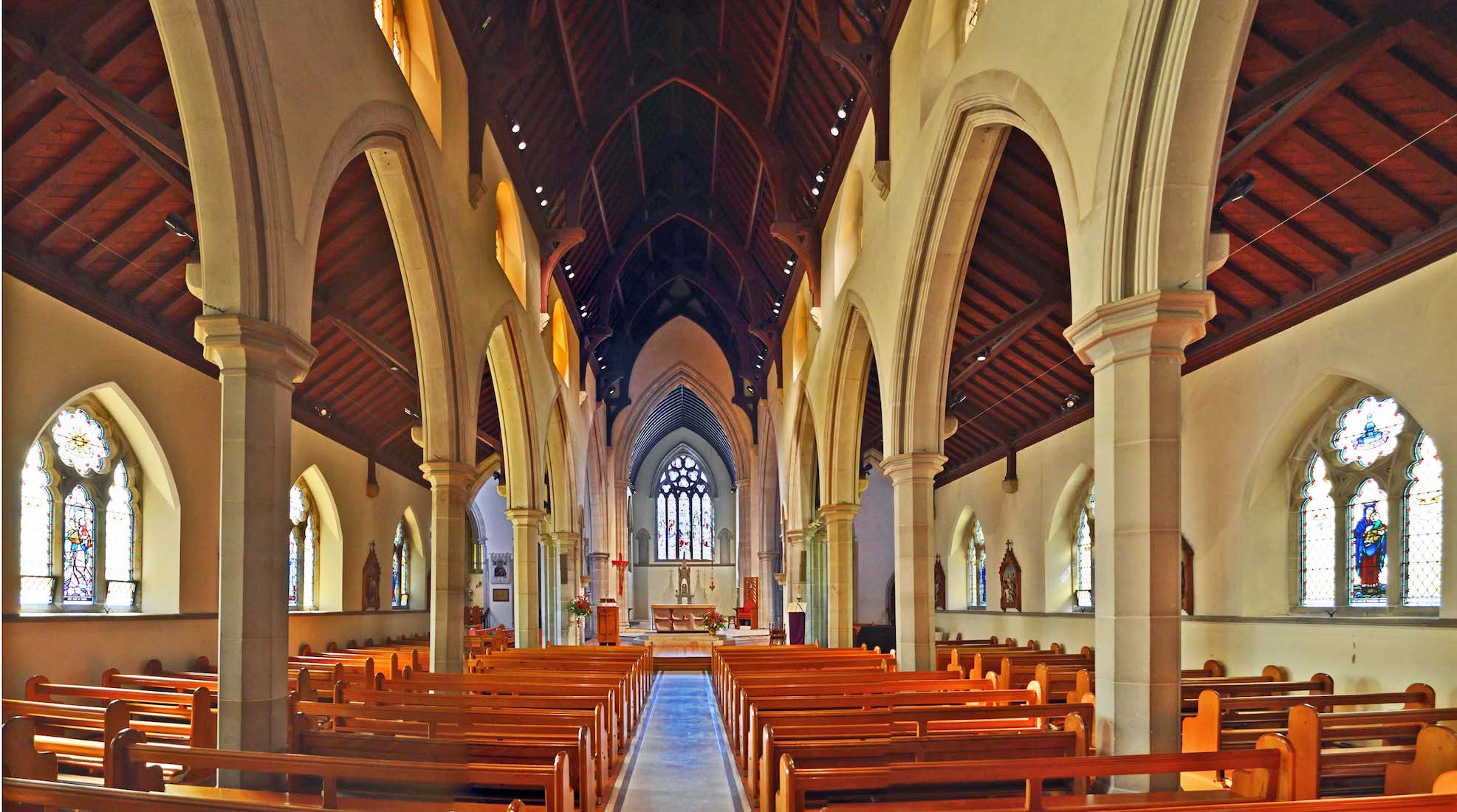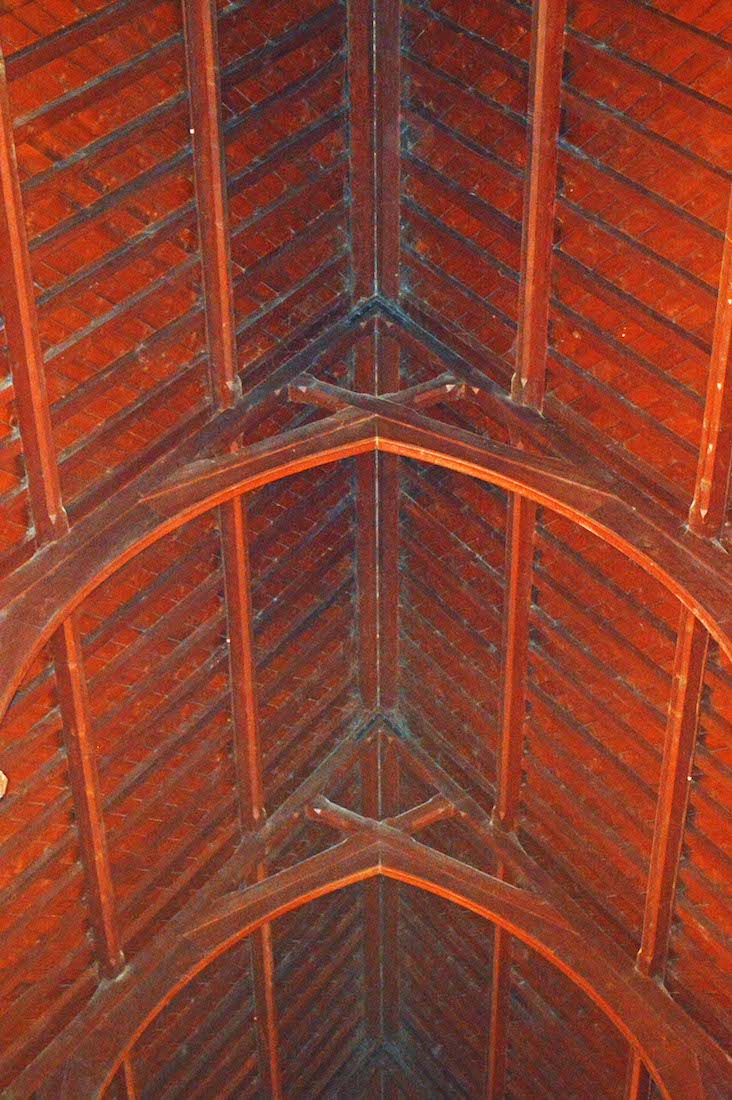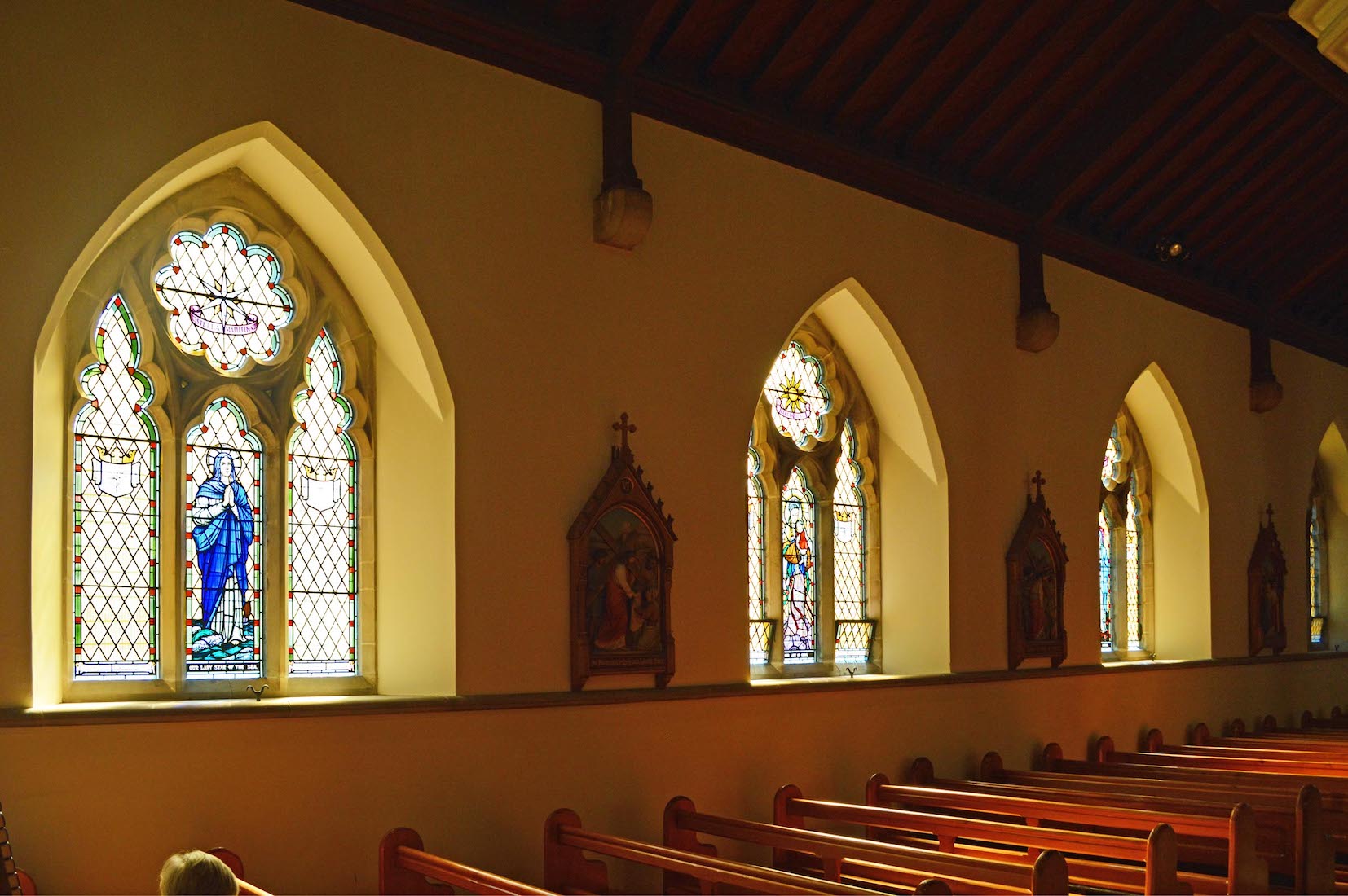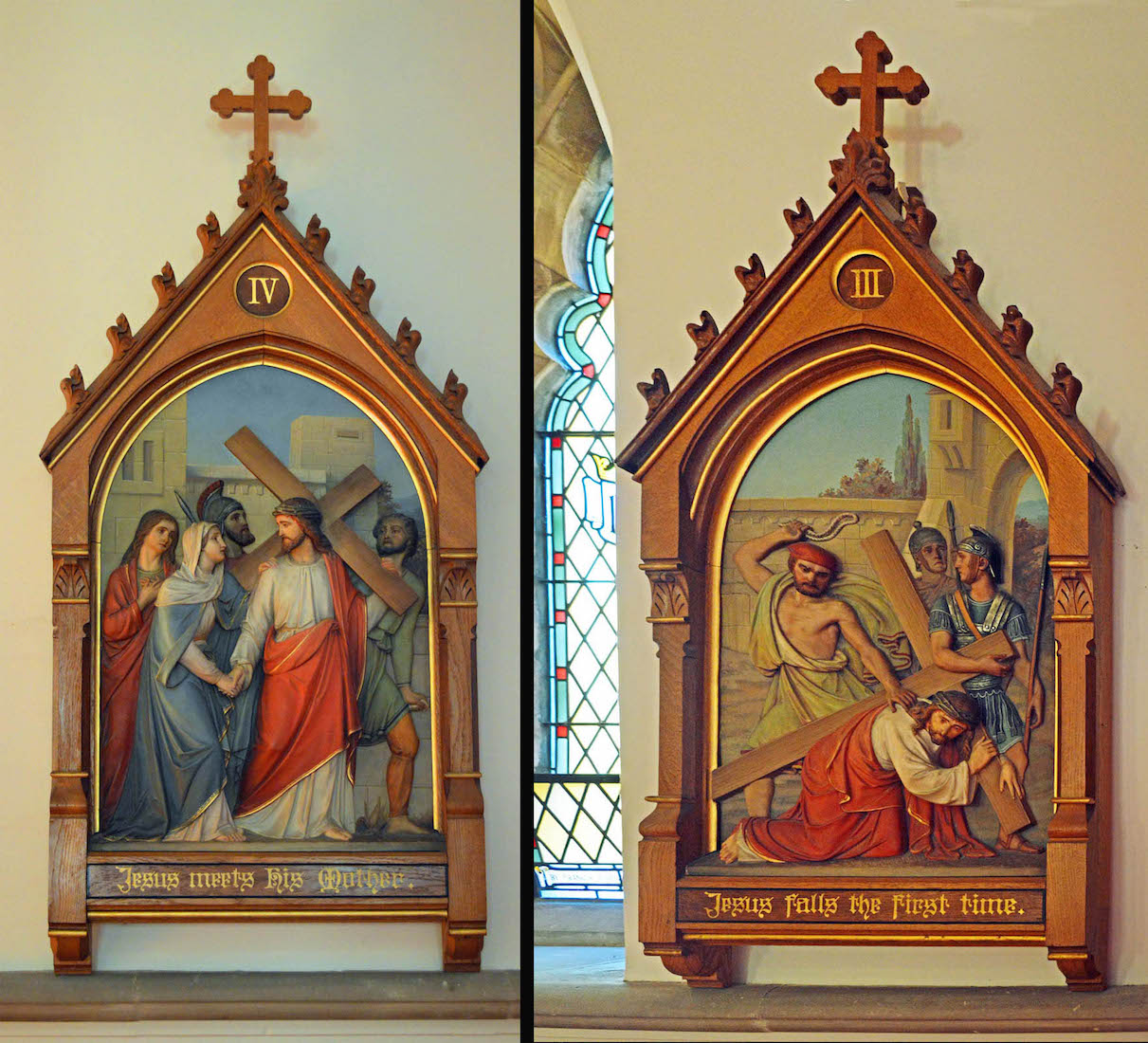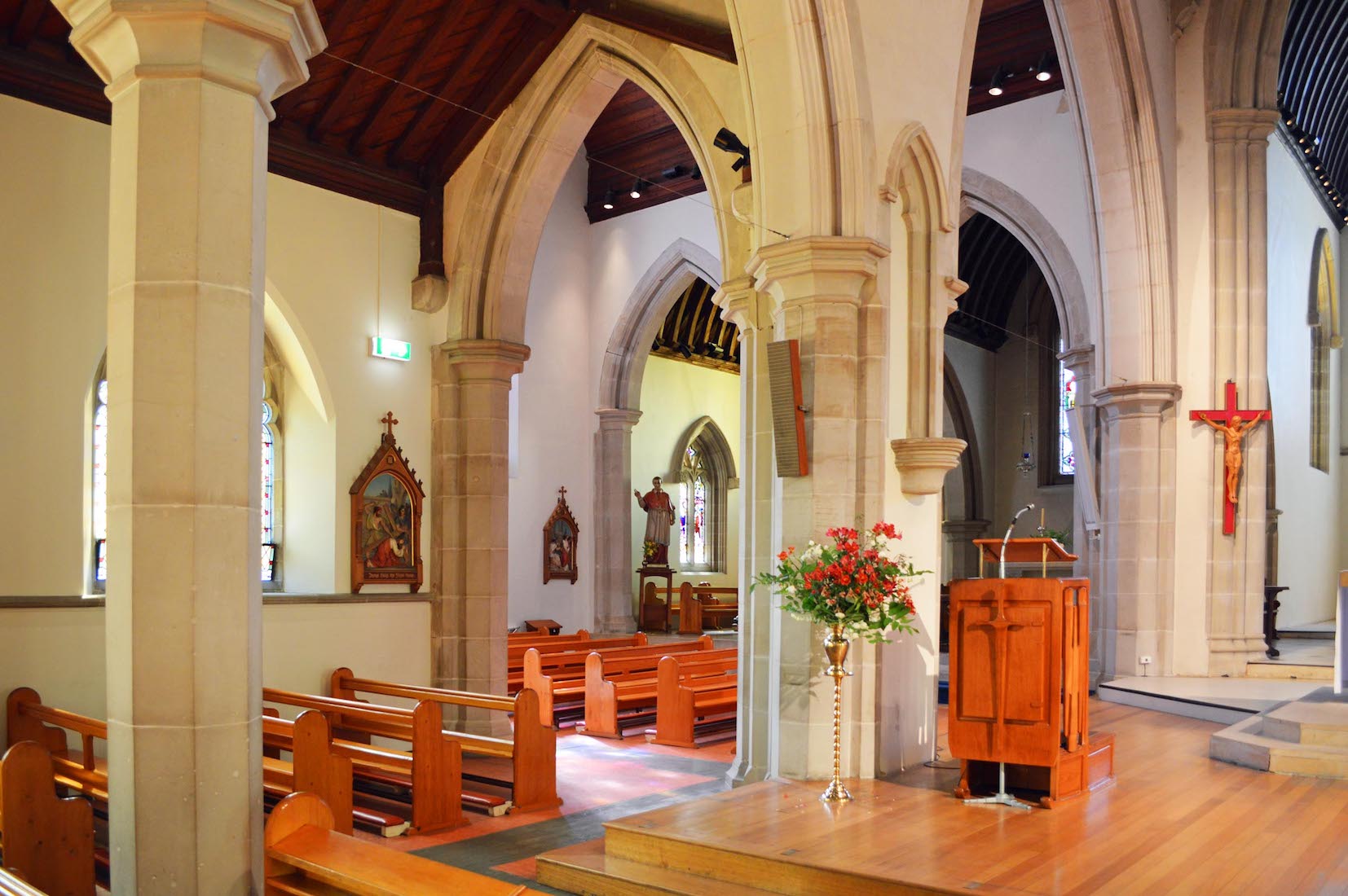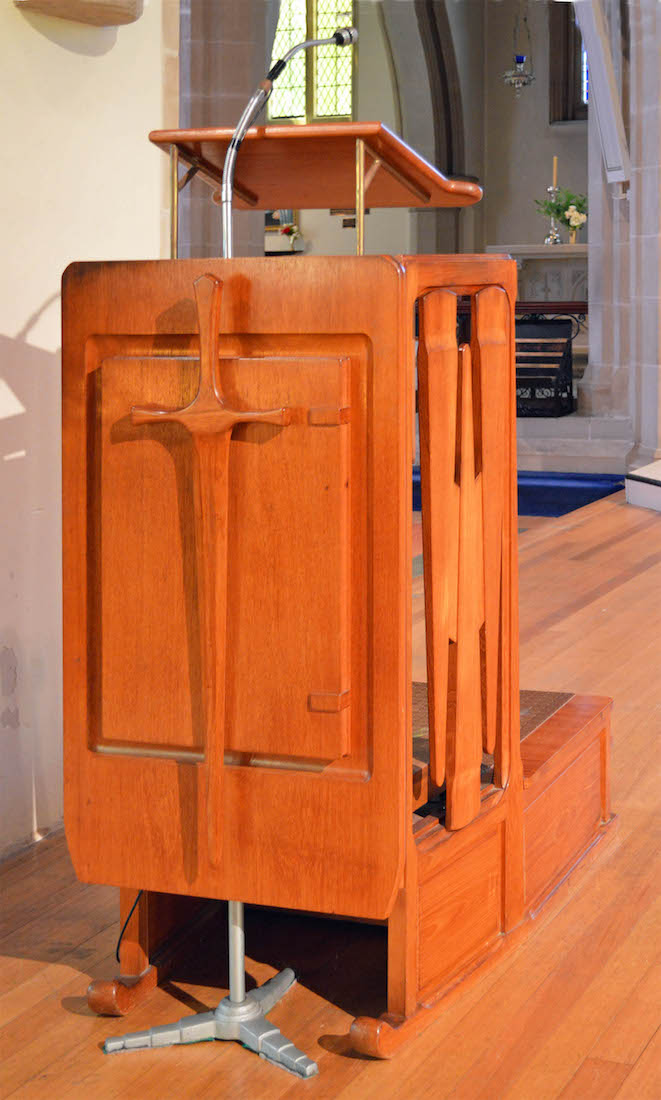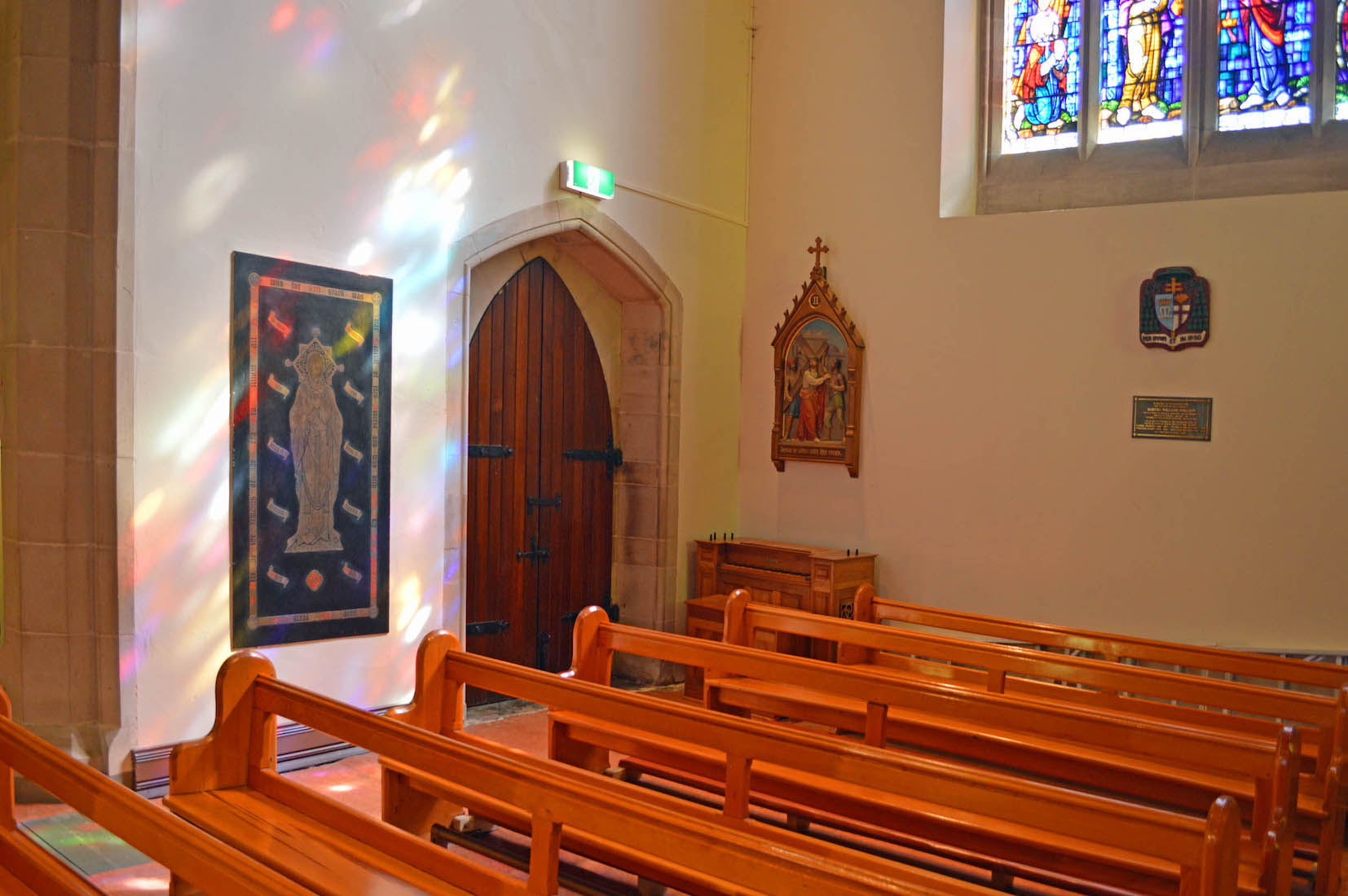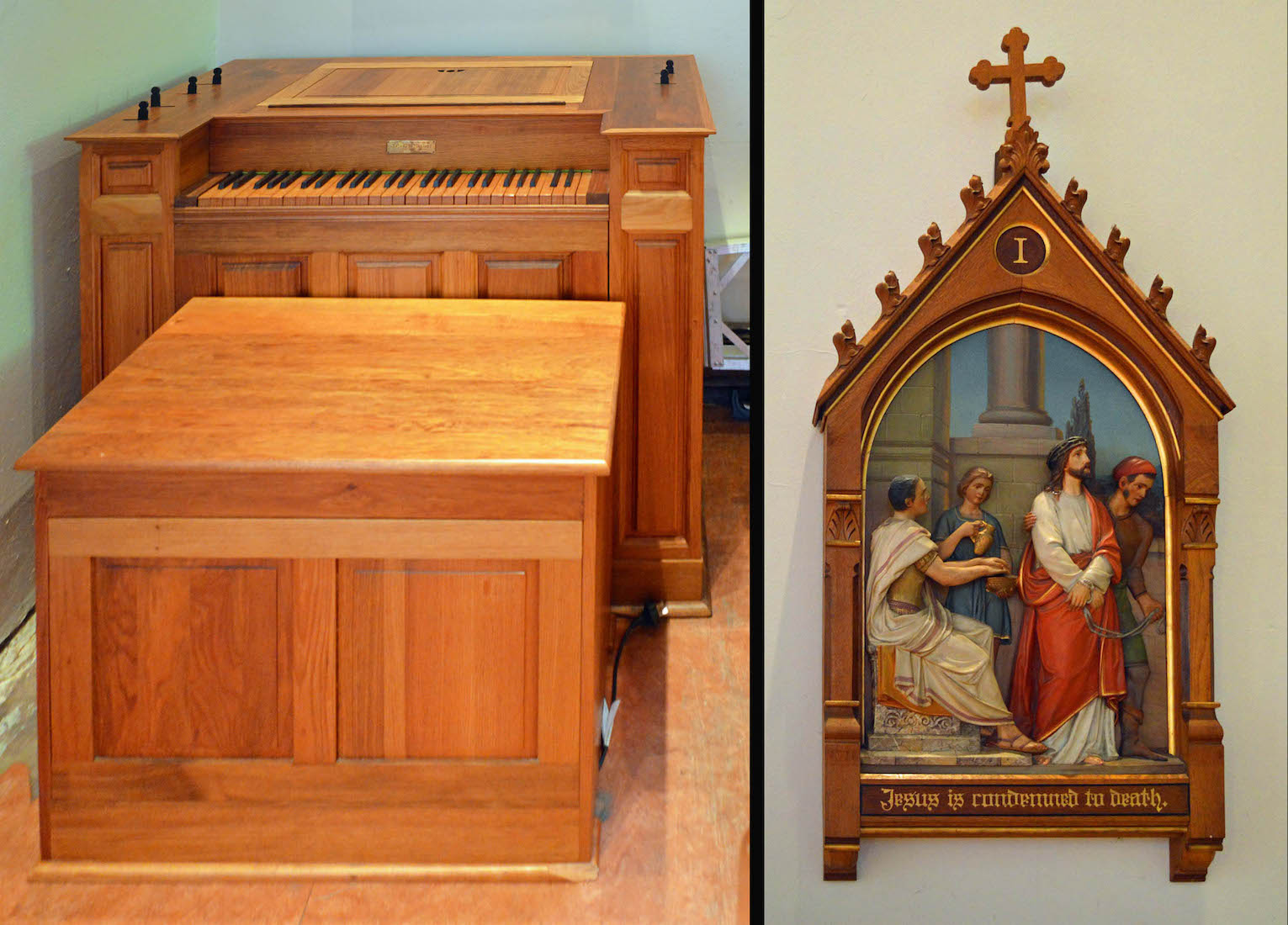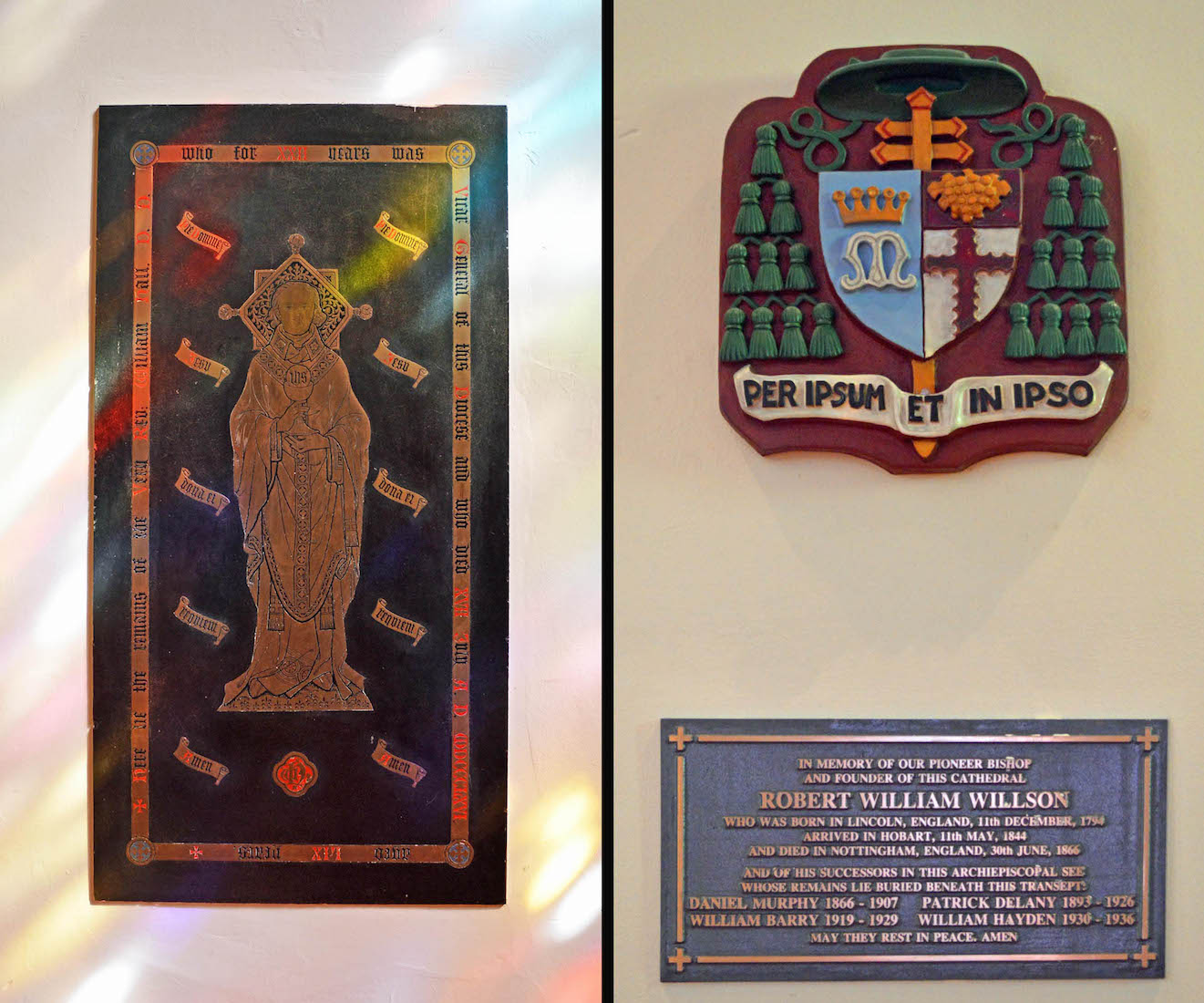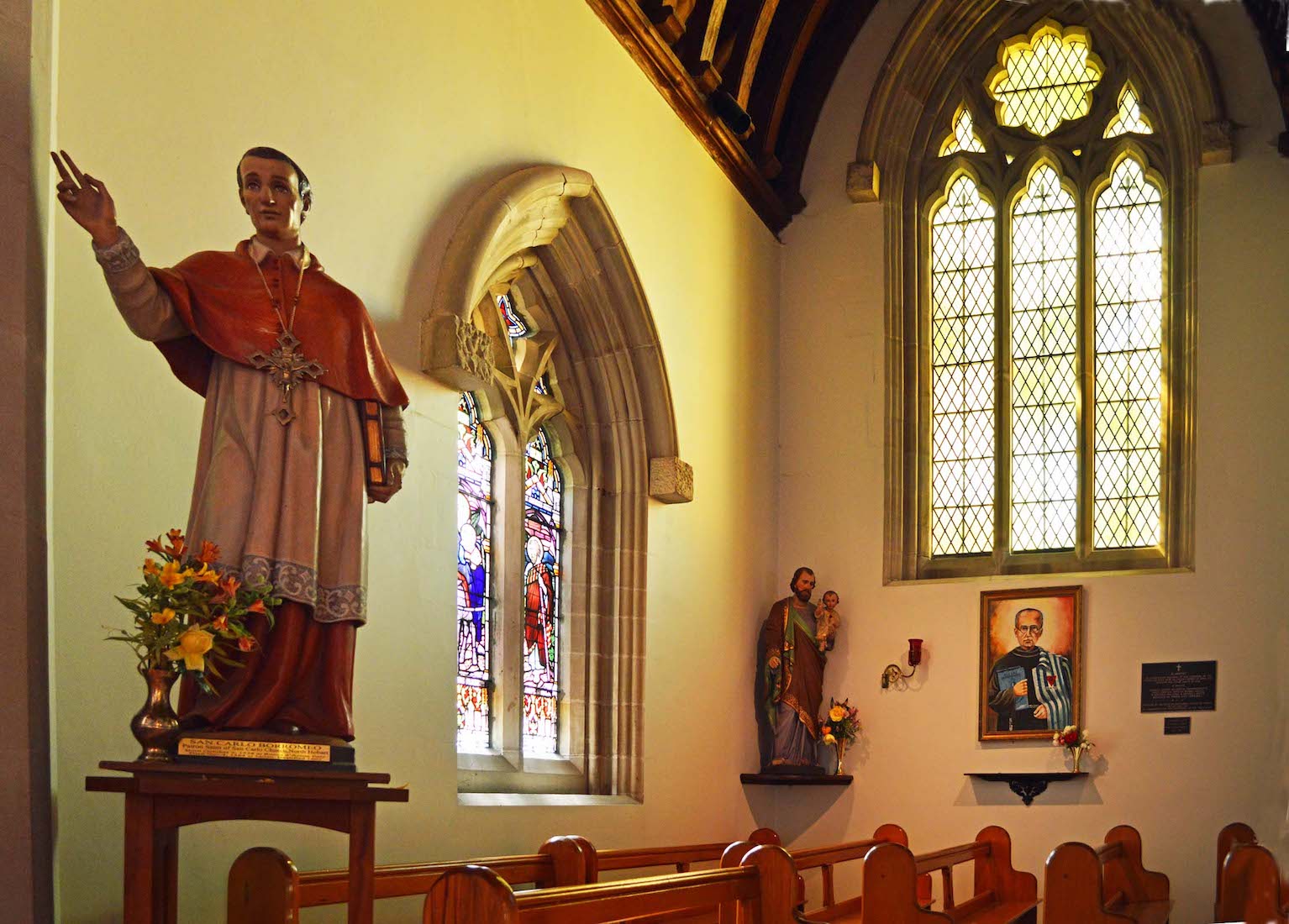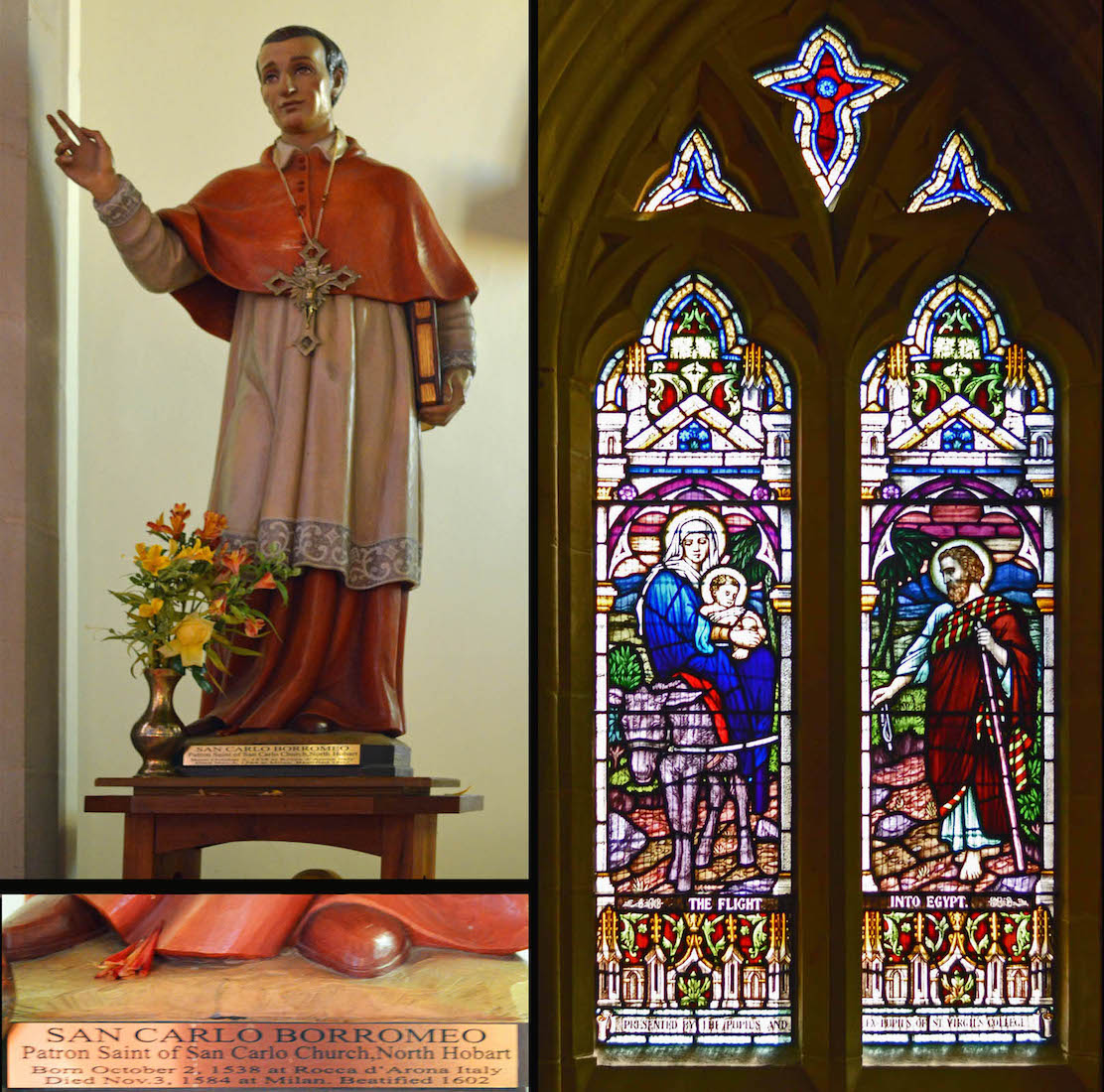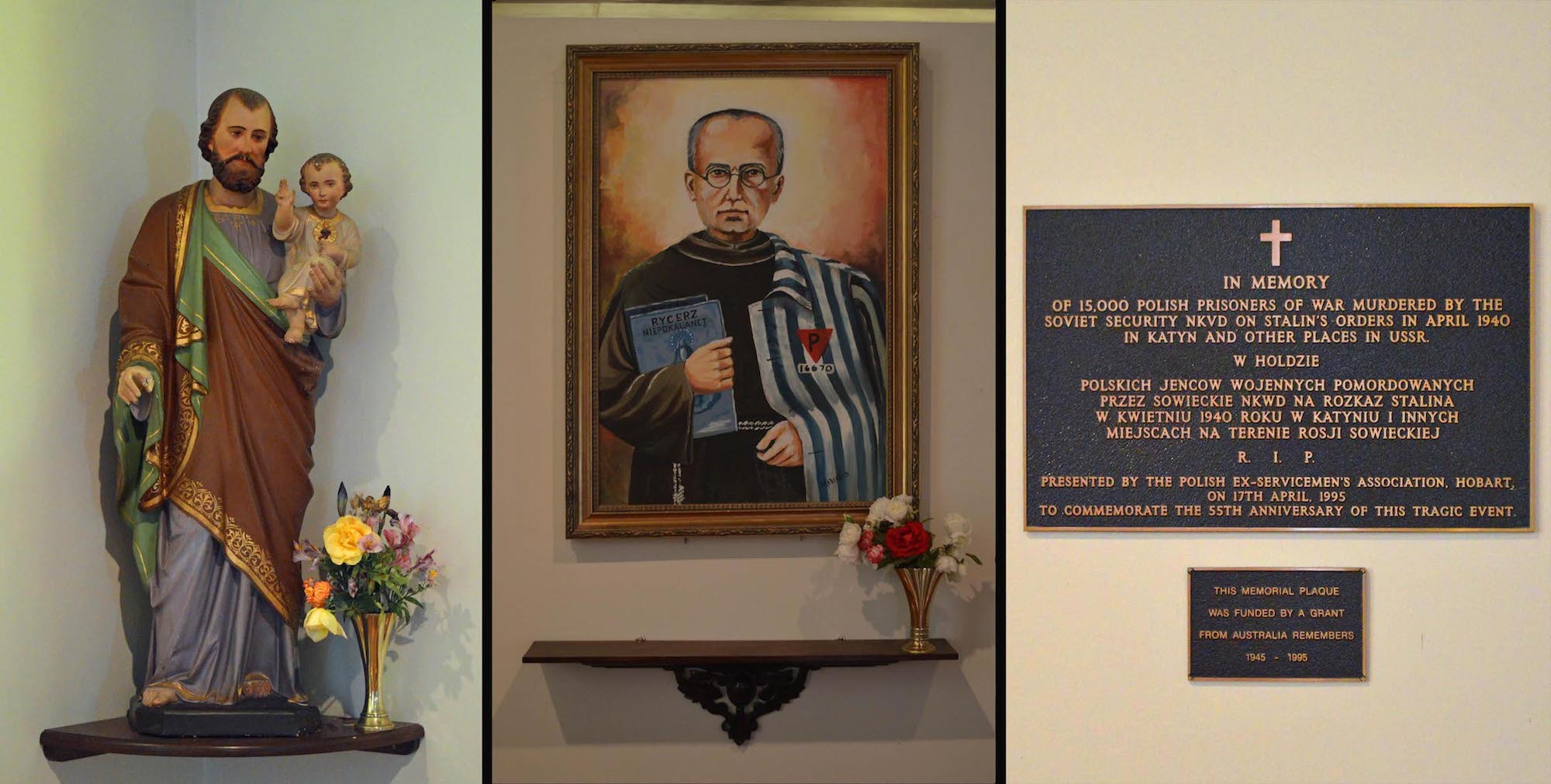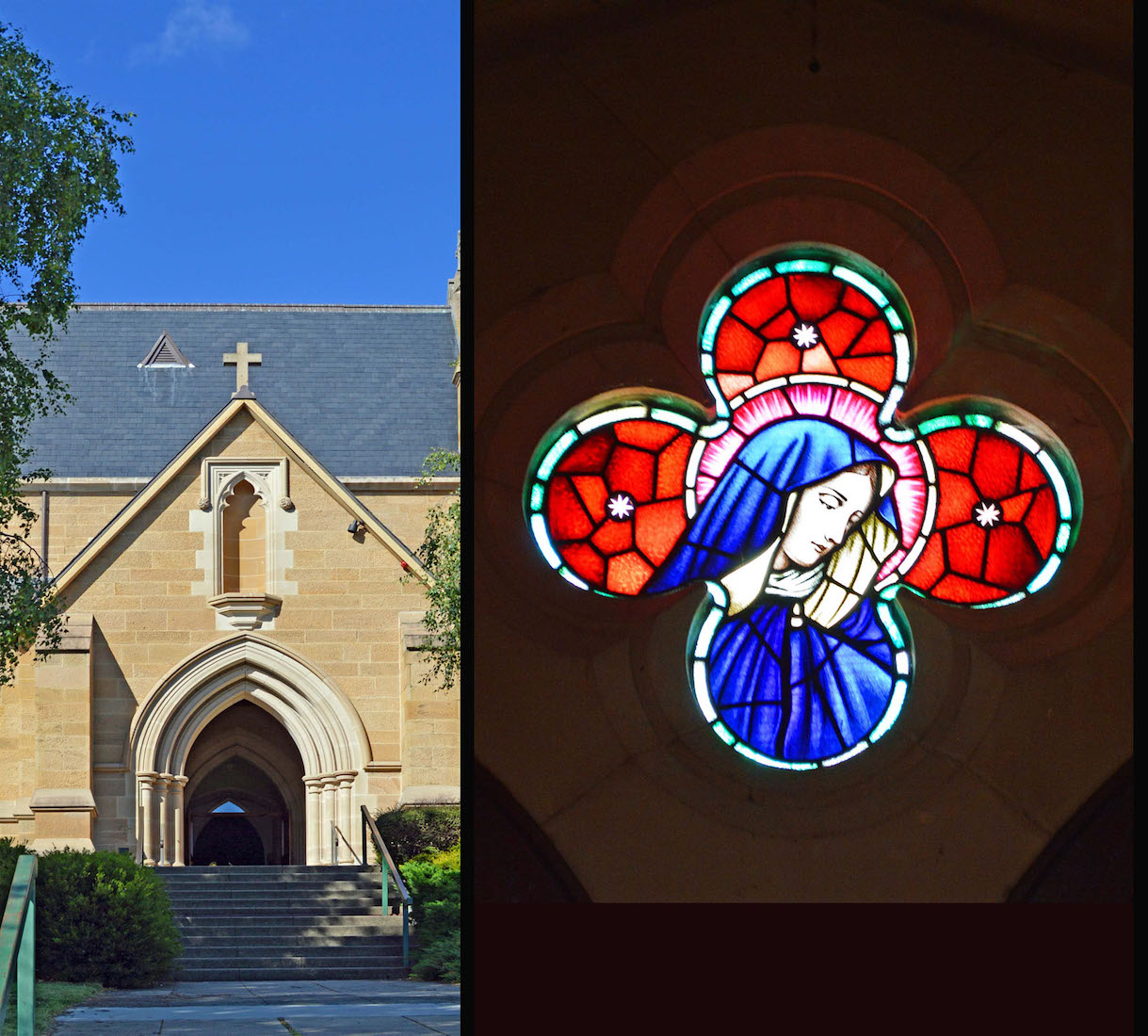
We now enter the Cathedral through the side door. Surely St Mary should be looking down from the niche above! In the narthex, above the West doors is this lovely quatrefoil of the Virgin Mary. In Byzantine art the three stars were thought to depict the Holy Trinity. PLAN
22. NARTHEX
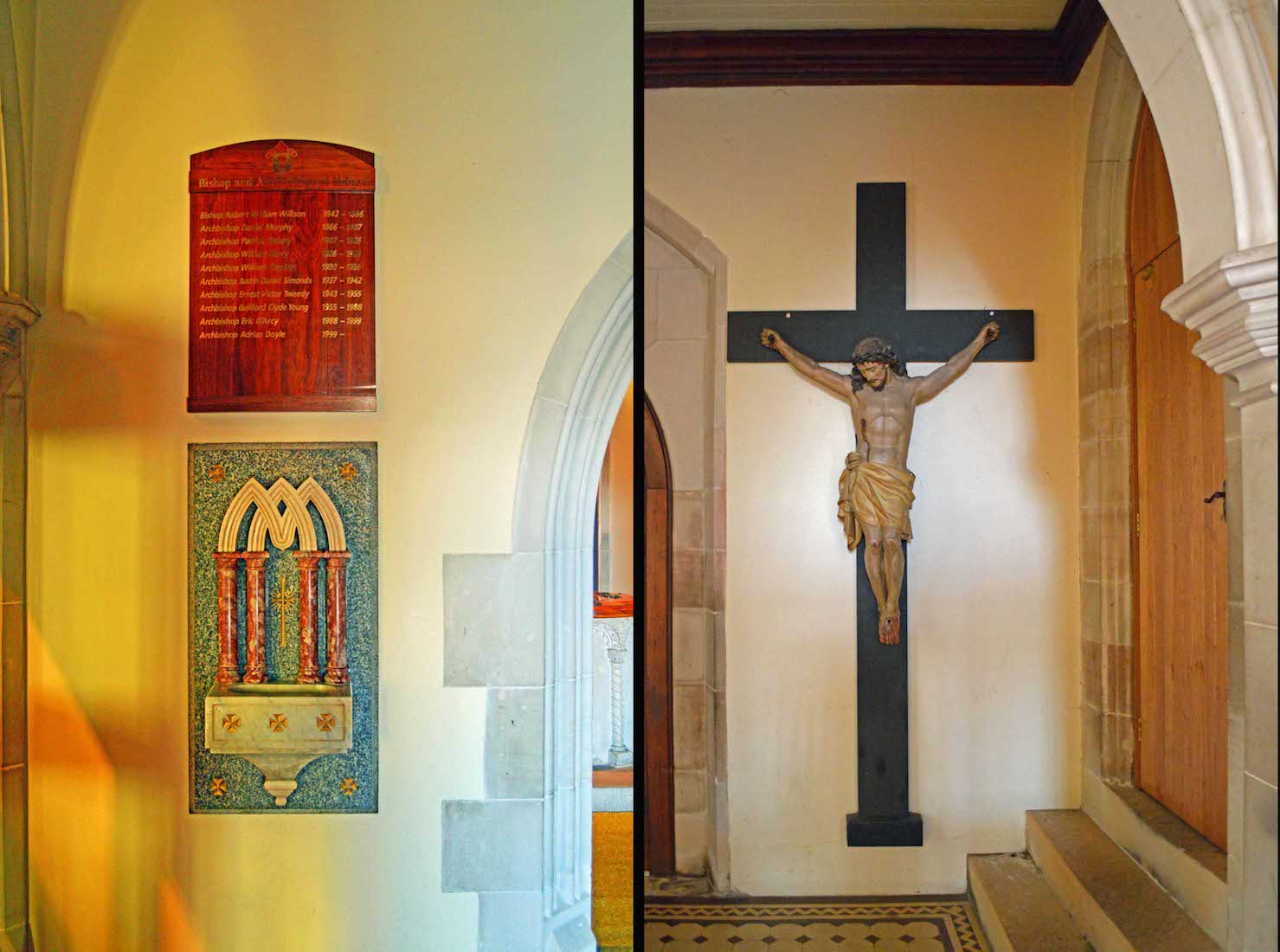
At left is a board listing the names of the Bishop and Archbishops of the Cathedral. Below this is a stoup under a stylized ‘M’ containing holy water. On the adjacent wall is a large crucifix.
23. BAPTISMAL FONT
Just South of the narthex is the Cathedral baptistry. The font is of international significance. Studies have revealed that it is likely a font from the Norman period (1066-1200) which was brought by Bishop Willson to Hobart and stored until its installation in the Cathedral in the 1890s. Its cylindrical form and elaborate arches and detail are unique. The age and history of this font makes it one of the most important fonts in Australia. The short walkway from the office block leads through the baptistry.
24. BAPTISTRY
On the West wall of the baptistry is a two-lancet window depicting the baptism of Jesus. The window was given in memory of John and Ellen Lynch, and James and Terence Lynch. Close by is a board listing the names of administrators of the Cathedral.
25. SCREEN
The baptistry is separated from the nave by a metal screen.
27. NAVE ROOF
The word ‘nave’ has the same root as the word ‘navy’. The connection is that the roof of the nave of a cathedral looks very much like the inverted hull of a boat. The roof of St Mary’s has a very simple supportive structure.
28. NAVE NORTH WALL
We begin our investigation of the interior by turning to the North wall of the nave. There are four windows on this wall, separated by Stations of the Cross.
29. NAVE NORTH WINDOWS
These unusual and lovely windows depict Mary as: Our Lady Star of the Sea, Our Lady of China, Our Lady of Lourdes, and Our Lady Help of Christians. The side windows bear floral decorations, except the last which has Mary (M) and Jesus (IHS) monograms. The side panes of the windows carry memorial scripts. The top panes show from left: Stella Matutina (the Morning Star); Electa Ut Sol (as the Sun); Ecclesia SSmi Rosarii (Church of the Most Holy Rosary); Porta Celis (The Gates of Heaven).
30. STATIONS IV, III
The nave and transept walls carry 14 colourful Stations of the Cross. Here we see: III Jesus falls the first time, and IV Jesus meets his mother. The Stations are an aid to meditation, particularly during Lent and Easter.
31. NORTHEAST CORNER
Moving past the pulpit, we come to the North transept and a pair of adjoining chapels.
32. PULPIT
The pulpit is attractive and modern, featuring a cross (or is it a sword?) on the front panel. It is from here that the Word of God is expounded week by week.
34. NORTH TRANSEPT WEST
In this corner of the transept is a black and gold burial plate, a Station of the Cross, and a memorial under the window. A small organ stands in the corner.
35. ORGAN AND STATION
This is the first of the Stations of the Cross: I Jesus is condemned to death. It is likely that the organ is used for small gatherings in the Cathedral.
36. MEMORIALS
The burial brass reads: Here lie the remains of the Very Rev. William Hall D.D. who for XXII years was Vicar General of this Diocese and who died XVII July AD MDCCCLXVI aged LIX years. The bottom plaque is in memory of Robert William Willson, pioneer Bishop and Founder of this Cathedral. His crest is at top.
38. SAINT AND WINDOW
Welcoming us is San Carlo Borromeo, who was Patron Saint of a Church in North Hobart. Borromeo was a reforming Cardinal of Milan 1564 – 1584, with a particular interest in ministering to prisoners. The window shows Joseph, and Mary carrying the baby Jesus, presumably as they travel home from Bethlehem.
39. CHAPEL ITEMS
Along the East wall of this chapel we find, at left, a statue of Joseph holding the young boy Jesus. At centre is a Polish prisoner of war, holding a Catholic publication. At right is a memorial plaque to Polish prisoners of war who died in Russia, presented by the Polish Ex-Servicemen’s Association in 1995.


